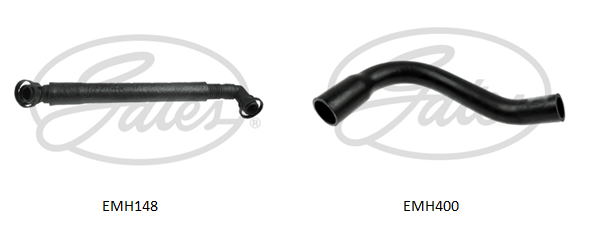Consider what would happen if the pressure generated in the engine was not evacuated. This is where breather hoses come in: plastic or rubber pipes that conduct combustion chamber gasses from the engine to the intake system, thereby allowing the hydrocarbons present in these gasses to be reused. In the following notes, we'll describe both the function and the importance of these breather hoses, along with the possible signs of wear that deserve close attention.
Why combustion chamber gasses have to be evacuated
Both gasoline and diesel engines generate internal pressure due to small amounts of combustion chamber gasses being released at the moment of compression and explosion. These gasses must be evacuated for several reasons:
1. The presence of hydrocarbons would prematurely degrade the motor oil. Moreover, the explosions generate moisture, which is subsequently deposited in the crankcase when the engine cools. The pump would then suck up the moisture, impairing lubrication or causing lubrication failure in certain systems and locations.
2. Engine performance would drop since the pressure would hinder the piston in its downward movement.
3. The pressure would eventually eject seals and gaskets, causing oil leaks.
Evacuating combustion chamber gasses: the early days
Early car engines evacuated combustion chamber gasses by releasing them into the atmosphere. Due to the toxicity of these gasses, this technique was soon discontinued in favour of another solution: evacuating the pressure through a conduit connected directly to the intake manifold in atmospheric vehicles or into the turbo inlet on turbocharged vehicles. The positive crankcase ventilation valve (PCV) was introduced to regulate the passage of these gasses.
Revolution: oil separators
Around the turn of the century, a revolutionary new system with oil separators saw the light of day. These decanters condense the oil contained in the combustion chamber gasses and return it to the crankcase. This had the advantage of decreasing oil consumption and gas emission, while also reducing the need for engine maintenance. To pass the gasses from the engine to the intake system, rigid plastic pipes or rubber pipes are used: these are the breather hoses.
Signs of wear on breather hoses
Over time, breather hoses may start to show signs of wear due to both the high-temperature environment they operate in, and the hydrocarbons and oil they're continually in contact with. Depending on the sleeve material, different types of damage may occur. Rubber pipes tend to soften, while plastic pipes harden and become brittle.
In rubber pipes, pay heed to the following signs:
• damage around the fittings or along the hose
• any accumulation of carbon and oil sludge which could cause obstructions in the pipe
• soft connecting elbows (these could bend and obstruct the gas flow)
• soft rubber pipes (these could cause vacuum leakage at the connection point)
With plastic pipes, keep an eye out for:
• damage in elbows and connections
• obstructions caused by carbon and oil sludge
• cracks caused by engine vibrations
The importance of timely replacements
Worn rubber or plastic breather hoses should immediately be replaced. Obstructions in the engine gas ventilation system will lead to increased pressure in the crankcase, ultimately causing the failures aforementioned.
Moreover, any fissure or break in the pipes will result in the release of toxic gasses into the atmosphere. It will also let air pass into the intake pipes, bypassing the flow meter. The latter event will degrade the air-gasoline mixture, eventually causing the engine to misfire. This would possibly lead to rough idling, rough starting, hesitation when accelerating, or could even bring the vehicle to a complete stop.
Best practice
Although breather hoses can break on their own due to engine vibrations, they generally fail after maintenance manipulation or repair works. We have seen this, for instance, on the Gates EMH148 pipe (a piece found in more than a million of BMW engines) and the EMH400 rubber tubing (present in one and a half million Opel engines).

Hence our strong recommendation to replace the breather hoses with new ones whenever they show signs of wear or whenever you manipulate them in the process of repairing or servicing a vehicle. This will help you avoid taking unnecessary risks or racking up extra labour time and additional maintenance costs. These measures will help prevent failure between belt service intervals which would result in customers' need for costly replacements.